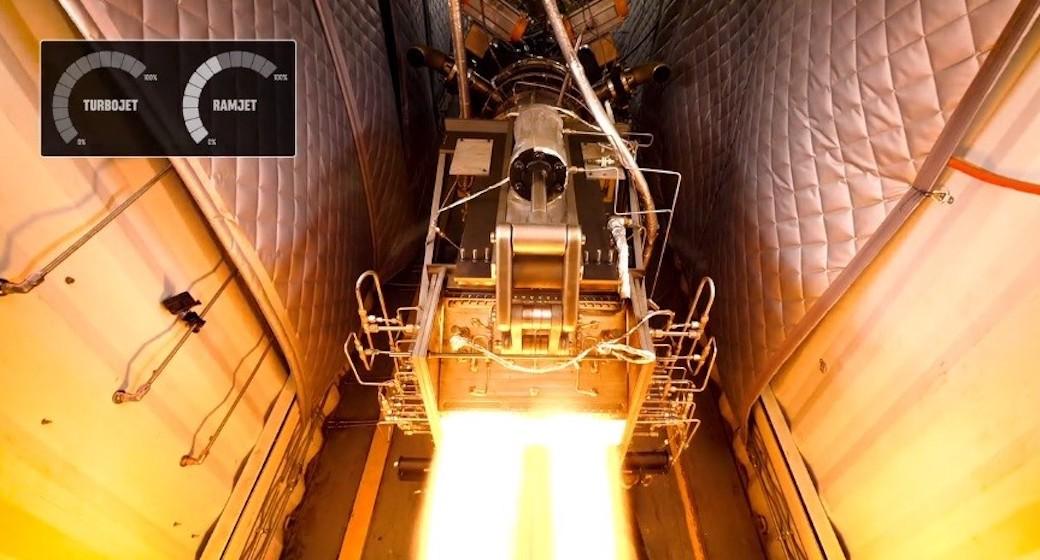
COLORADO SPRINGS—Start-up hypersonic aircraft developer Hermeus has demonstrated mode transition of the company’s in-house-designed Chimera turbine-based combined-cycle engine (TBCC), which will power the Atlanta manufacturer’s Quarterhorse Mach 5 test vehicle.
The TBCC is designed to enable the Quarterhorse to accelerate from a standing start on the runway to Mach 5 using a combination of a turbojet and ramjet. The turbojet is designed to operate to around Mach 3 while the ramjet operates over the transition range from approximately Mach 2.8 to above Mach 3 and then onward to Mach 5.
Key developments designed to achieve this have been demonstrated in direct-connect tests at the Notre Dame Turbomachinery Laboratory (NDTL) in South Bend, Indiana. These include repeated transitions to and from turbojet to ramjet operation, as well as operation of the Hermeus-developed pre-cooler. This latter feature is designed to pre-condition the air entering the turbine, enabling it to reach higher speeds before the Chimera transitions to ramjet mode.
The baseline pre-cooler and Hermeus-developed ram burner were evaluated during initial subscale prototype tests in 2019-20 that were based on a 290-lb.-thrust off-the-shelf TJ100 turbojet supplied by Czech-based high-speed turbine maker PBS. The larger-scale version tested at the company’s Atlanta site, and now at high-Mach conditions in NDTL, is centered on the high-pressure core of a General Electric J85-21—a late generation 3,500-lb. dry thrust variant with an additional compressor stage.
The flight-weight Chimera test engine also incorporates larger versions of the ram burner, exhaust nozzle, bypass system, inlet and precooler. Once through its ground-test campaign, the engine will be integrated into the first Quarterhorse proof-of-concept flight vehicle—a functional ground prototype of which was unveiled in November 2021.
The first flying Quarterhorse version is scheduled to become airborne in late 2023, although it will be restricted to remotely piloted subsonic flights, likely at Edwards AFB, California. The vehicle is expected to pave the way for a follow-on hypersonic passenger version dubbed the Darkhorse. Hermeus has not announced the selection of the core turbine engine for the Darkhorse, but has said it will be in the Pratt & Whitney F100-class.
The production Darkhorse will have to undergo FAA airworthiness certification prior to providing commercial hypersonic testing service for the Defense Department and other customers. The Darkhorse is intended to pave the way for a civil hypersonic transport design dubbed the Halcyon.
Describing the mode-transition test as a “major technical milestone for Hermeus,” CEO A.J. Piplica adds: “More than that, it’s a proof point that demonstrates how our small team can rapidly design, build and test hardware with budgets significantly smaller than industry peers.”
Remarking on the fast pace of the company’s achievements in a commentary written for Aviation Week, Piplica says “since our founding in 2018, we have raised over $120 million in private capital, developed a hypersonic engine faster and cheaper than comparable U.S. government programs (one-third the schedule at one-eighth the cost), and are on track to fly our first aircraft—Quarterhorse—in 2023.”
